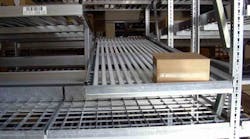Does it make more sense for a manufacturing enterprise to use a perpetual or a periodic inventory plan? The answer may depend on how to set the right inventory levels, and how to manage "unplanned" demand. And, in that effort, it becomes critically important to understand the value that individual inventory items represent to the enterprise strategy.
The first entry in this series addressed "Periodic vs. Perpetual Inventory Methods"; the second installment covered "The Q Factor in Inventory Counting."
Software is not the solution, it is the enabling tool. With proper planning, software, and procedures, reliable inventorying is easy to achieve. If, for example, you use Sales Orders (SO), those create demand against your on-hand count. When the order is shipped, the SO is converted to an Invoice, and at that point you recognize revenue/COGS increase AR and decrease FG inventory.
Knowing real-time revenue, cost of goods sold, and margin, coupled with what is actually available to sell/commit, is well worth the work involved in selecting, applying, and maximizing the resources of a reliable inventory software platform.
Today, it is very difficult to make a case for periodic inventory, however remember the caveat that the best software is not going to work with the worst business process. It’s critical to have a “super user” that fills the role of "go-to" on platform questions, either to resolve them personally or to consult for a resolution. Of course, having highly trained professional and support staff is essential to making software work reliably.
Typically, if the organization cannot do it without the software, it probably cannot do it with the software, and the implementation is very likely to be an exercise in futility: the computer is a powerful servant, but a terrible master.
Although most of this three-part series has focused on buying and reselling items, the concepts are equally applicable to converting raw materials into intermediate and finished goods that are to be sold. We have addressed certain of the cost and quantity considerations, planning inputs, and enabling software. I hope you take away at least one insight that you can put into practice for what I call “outventory” — converting that inventory investment into cash, and profit.
Scott Palka is a partner and consulting CFO for Pro Back Office, a provider of skilled operational accounting, finance and strategic consulting talent, experience and expertise. He holds an MBA from the University of Denver’s Daniels School of Business and a B.S. with honors, from the University of Illinois. Contact him at LinkedIn.








